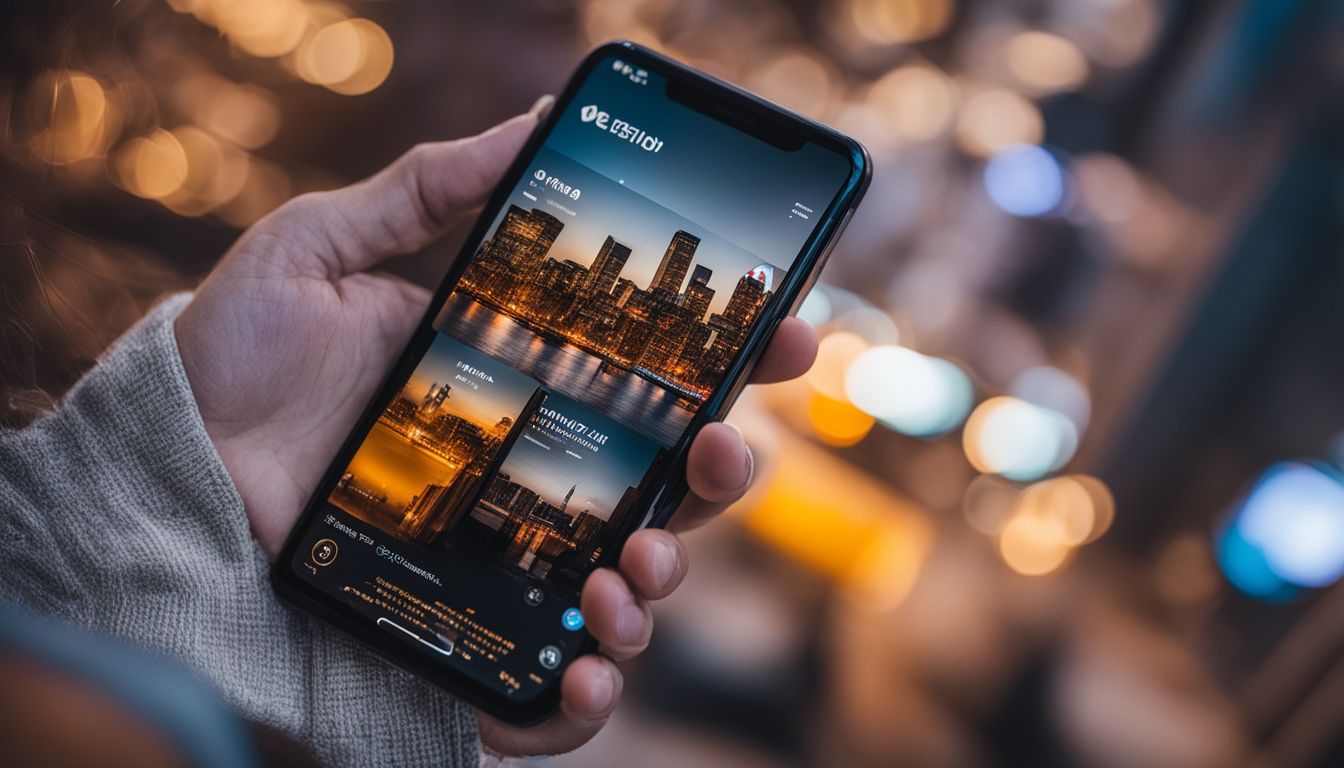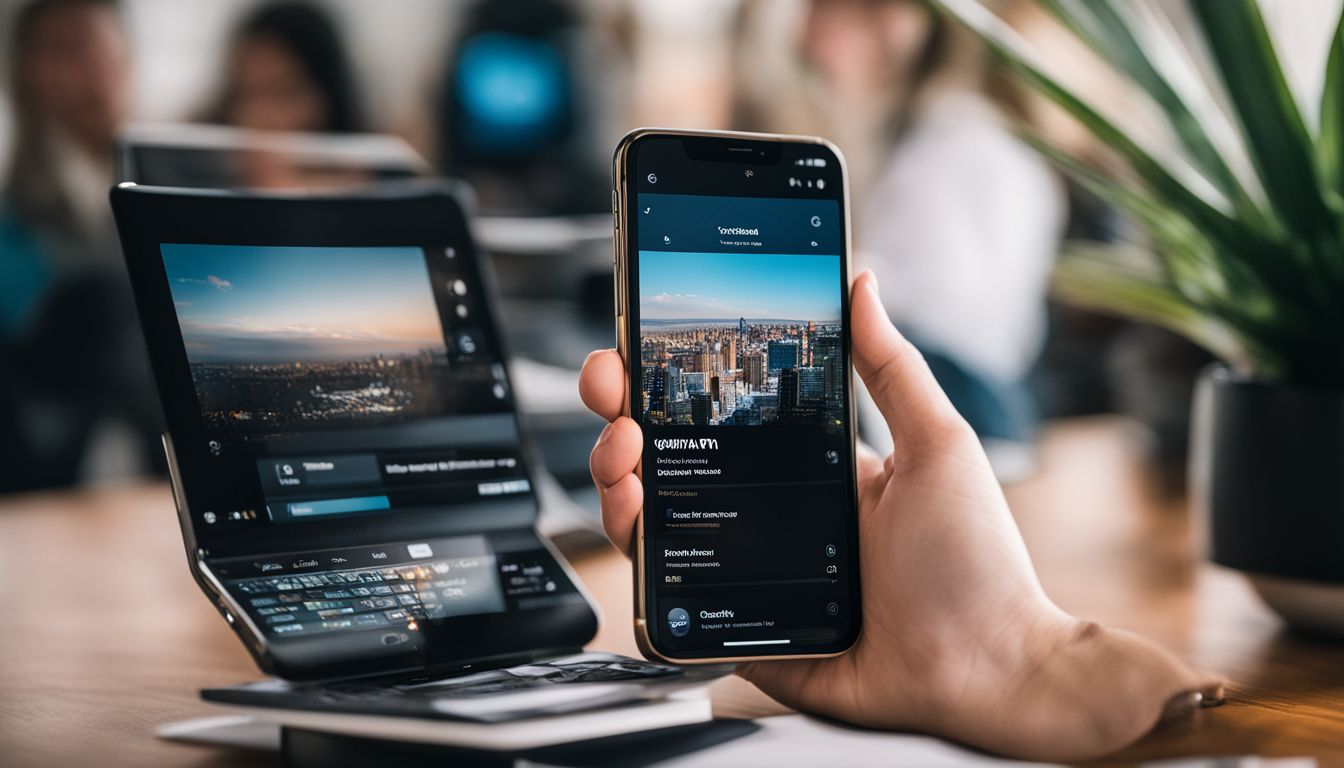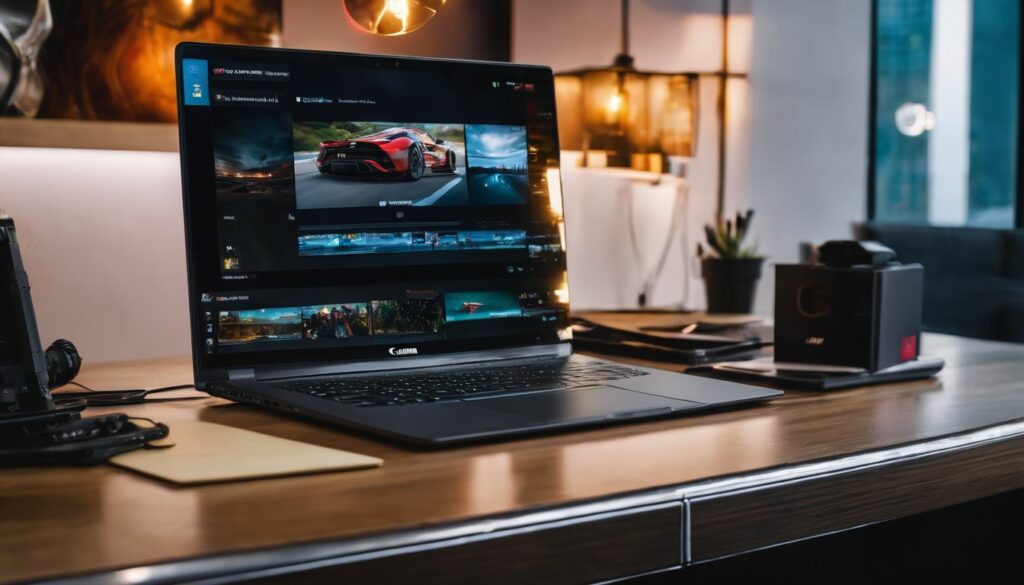Have you ever tried to find something online using your phone, only to give up because the website was too hard to use? You’re not alone. Today’s internet is buzzing with on-the-go users who demand quick and easy access to websites from their mobile devices.
But if they hit a snag, like small text or slow loading pages, they might leave—and never come back.
Did you know that more than half of web traffic now comes from mobile phones? That’s right! So it makes sense for businesses like yours to make sure your site looks great and works well on these smaller screens.
This article will guide you through simple ways to do just that. From making your website ready for thumbs scrolling at lightning speed, we’ve got the tips you need.
Ready for more clicks and customers? Let’s dive in!
The Core of Mobile SEO: Understanding the Basics

Decoding mobile-friendly algorithms and understanding the importance of mobile-first indexing are crucial for boosting online visibility in the small screen era.
Decoding mobile-friendly algorithms
Mobile-friendly algorithms are smart rules that search engines use to rank websites. They check if your site looks good and works well on phones. To do well with these algorithms, you must make sure people can easily read and use your website on their mobile devices.
This means big buttons, text that’s easy to see, and pages that change size to fit the screen. Search engines like Google give better spots in search results to sites that are mobile-friendly.
Your business needs a strong online presence and being at the top of mobile searches helps a lot. Think about how fast your pages load on phones too because slow-loading websites might get lower rankings.
By focusing on making your website friendly for phone users, you’re more likely to show up when customers look for things related to what you offer. This is very important because lots of people now use their phones instead of computers to find information and shop online.
The importance of mobile-first indexing
Google now looks at your mobile site first to decide how high you should be in search results. This is what we call mobile-first indexing and it’s a big deal. Your website needs to be ready for this change.
If your mobile site is slow or hard to use, Google might not show it as much when people search for things.
Optimising your mobile site’s speed boosts your chances of being seen on Google. Think about someone searching on their phone; they want answers fast! A quick-loading site can help them pick you over someone else.
With the right SEO strategies, including page speed optimisation, you’re telling search engines that you mean business.
Next up, let’s dive into making websites that work well and look great on small screens.
Tailoring for the Small Screen: Mobile-Friendly Website Design

Ensure your website is responsive and adapts to various screen sizes, as well as consider using Accelerated Mobile Pages (AMP) for faster loading times on mobile devices.
Responsive design essentials
To make your website mobile-friendly, you need responsive design. This means that your site automatically adjusts to fit the screen it’s being viewed on, whether it’s a phone or tablet.
With more people using their phones to look things up, having a site that’s easy to use on small screens is key. Your pages should load fast and look good on any device.
Good responsive design helps users find what they need quickly and enjoy visiting your site. Think about big buttons for easy clicking and text that’s easy to read without zooming in.
These simple changes can make a huge difference for people browsing on mobile.
Next up is making sure your mobile pages load super fast with Accelerated Mobile Pages (AMP).
Accelerated Mobile Pages (AMP) for speed optimisation
Accelerated Mobile Pages, or AMP, make websites run really fast on phones. Using AMP means your site loads almost right away when someone taps on it in search results. This speed can make visitors happy and help your website move up in Google rankings.
Fast loading is super important for mobile SEO because people use their phones all the time and they want information quickly.
By making sure your site uses AMP, you’re taking a big step towards better mobile page speed. Your business gets seen more by people searching on their phones. And when your site pops up fast, you’re telling customers that you value their time.
After focusing on speed with AMP, think about how to make sure people enjoy using your site once they get there.
Content Optimisation for Mobile: Engaging the On-the-Go User
Crafting and delivering concise, compelling content is essential for engaging on-the-go mobile users. It’s crucial to prioritise readability and easy navigation to keep the attention of busy mobile audiences.
Crafting concise and compelling content
Good content for mobile grabs attention fast. Use short sentences that make sense quickly. Your words should lead the user to act, like clicking a button or buying something. Pick powerful words and leave out any that don’t help your message.
Make sure people on phones can read your text easily. Big headings, bullet points, and lots of space are key. Users scroll through pages with their thumbs, so think about what they see first and last.
Images matter too; they should load fast and look good even on small screens.
Remember, strong mobile content can boost your site’s power in the smartphone world!
Prioritising readability and navigation
After making sure your content is sharp and to the point, focus on how easy it is for users to read and move around your site. A mobile-friendly website lets people find what they need fast.
Text must be large enough to read on a small screen. Menus should be simple so fingers can click without mistakes.
Good navigation helps users and also boosts your mobile search rankings. Think about how someone uses their phone. They use one hand most times, right? Make sure your website works well like this.
If folks enjoy using your site, they’ll stay longer, visit more pages, and likely come back again. This shows search engines that your site is helpful, which can help you show up higher in results.
Remember: Making a website that’s good for phones isn’t just nice to have – it’s needed! Businesses thrive when customers easily do what they want on their sites using phones or tablets.
Keep tabs on new updates from Google too; they’re always changing how they decide which sites are best for mobile users.
Enhancing Mobile User Experience
Focus on improving page load speed for mobile users and navigating the nuances of mobile keyword optimisation to ensure a seamless and engaging experience for on-the-go users. These factors play a crucial role in boosting online visibility and search engine rankings in the small screen era.
Improving page load speed for mobile users
Make your website fast for mobile users. Quick loading times keep people on your site longer. If a page takes too long, they might leave. Use tools to check your mobile site’s speed.
Fix issues like large images or slow code to make pages load faster.
Having a speedy mobile site also helps with search engine rankings. Google likes fast sites and uses speed in its mobile-first indexing. This means a quick-loading site can show up higher when people search.
Now think about how users find what they need on your mobile site..
Navigating the nuances of mobile keyword optimisation
Ensure your website uses mobile-friendly keywords. Utilise relevant terms that users on the go are likely to search for, such as “near me” or local phrases. Improve your site’s visibility by incorporating location-specific keywords and phrases that resonate with mobile users, driving foot traffic to local businesses.
Don’t forget to optimise for voice searches too, as they’re becoming increasingly popular in today’s smartphone-driven world.
Implement mobile SEO best practices for keyword optimisation to boost your online visibility and search rankings in the small screen era. It’s essential for businesses to adapt their keyword strategies to cater to on-the-go users and stay competitive in the mobile-first indexing landscape.
The Impact of Mobile Optimisation on Business Success
Mobile optimisation can significantly impact a business’s online visibility and search rankings. When users can easily access your website on their phones, it increases the chances of engagement and conversions.
With mobile-first indexing, ensuring your mobile site’s speed is optimised becomes crucial for better search engine rankings. Implementing mobile SEO best practices not only benefits online visibility but also drives foot traffic for local businesses through “near me” searches.
In today’s smartphone-driven world, mastering mobile optimisation is essential for maintaining a strong online presence and business success in the mobile-first era.
By harnessing the power of mobile SEO, businesses can effortlessly supercharge their websites for every device and boost rankings.
The Future of Mobile SEO: Voice Search and Beyond
Preparing for the rise of voice search and adapting to emerging mobile technologies will be crucial for staying ahead in the evolving world of mobile SEO. It’s important to understand how these advancements will impact online visibility and user experience, and to implement strategies that align with the changing landscape of search.
Preparing for voice search optimisation
Voice search is becoming increasingly important in the world of mobile SEO. To optimise for voice search, it’s crucial to understand how people speak when using voice assistants like Siri or Alexa.
Including natural, conversational phrases and long-tail keywords can help your website rank higher in voice search results. It’s also essential to focus on local SEO, as many voice searches are location-based.
Ensuring that your business information is accurate and consistent across all platforms can greatly improve your chances of appearing in “near me” searches through voice assistants.
Adapting to emerging mobile technologies and trends
To further enhance your digital presence, it’s crucial to stay abreast of mobile technologies and trends. Mobile SEO is rapidly evolving, so adaptability is key. Keep an eye on emerging trends like progressive web apps (PWA), which offer a seamless app-like experience within a web browser.
Additionally, consider the impact of 5G technology on user expectations for faster load times and richer content experiences. Embracing these advancements can bolster your online visibility and keep you ahead in the competitive digital landscape.
Prepare to pivot towards innovative features such as augmented reality (AR) or virtual reality (VR) integration into mobile websites, enabling immersive user experiences. As voice search continues to rise in popularity, optimise your content for conversational queries with natural language patterns.
Conclusion: Mastering Mobile SEO for Digital Dominance
In conclusion, mastering mobile SEO involves understanding the basics, optimising website design for mobile, and creating engaging mobile content. These practical strategies can significantly improve online visibility and search rankings.
Mobile-first indexing optimisation is essential for success in the small screen era. Implementing these techniques can lead to a substantial impact on business success in today’s smartphone-driven world.
Explore additional resources to continue learning about enhancing mobile SEO for digital dominance.
To delve deeper into the transformative effects of mobile optimisation on your company’s growth, read our detailed piece on “The Impact of Mobile Optimisation on Business Success”.


